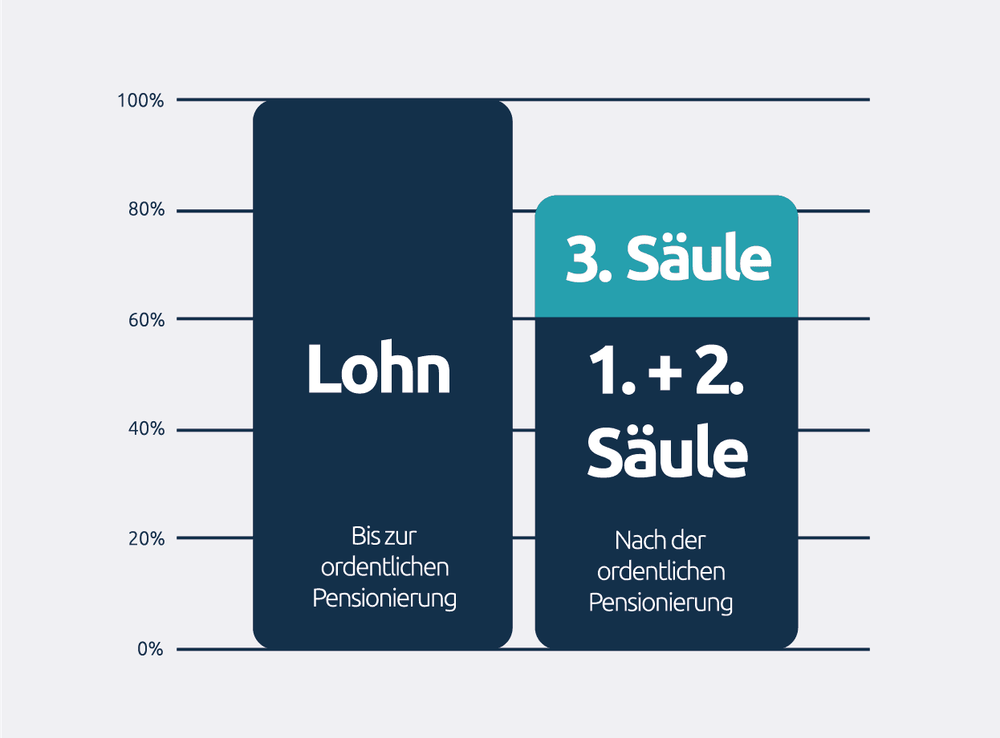With the ability to retroactively close contribution gaps of up to ten years, you can strengthen your pillar 3a retirement savings. This allows you to address potential shortfalls in your pension plan and better prepare for a financially secure retirement over the long term.
What does this mean for you?
Until 2025, it was not possible to make up missed pillar 3a contributions. With the new regulation effective since 2025, you can make retroactive payments for up to ten years, though only for gaps incurred from 2025 onward.
If you need assistance or have questions about the best approach for your retirement planning, our experts at smzh are always available to support you.
Leveraging tax benefits
Like regular contributions, these retroactive payments are fully deductible from your taxable income. Each year, you are permitted to make one additional “catch-up” payment equal to the so-called “regular contribution limit,” which for 2025 is CHF 7,258. This amount may be adjusted for inflation every two years.
Requirements for retroactive payments
To take advantage of this new opportunity, the following conditions must be met:
- You must have earned income subject to Swiss AHV (social security) both in the year the contribution gap occurred and in the year of the retroactive payment.
- The full annual contribution for the current year must be paid before any retroactive payments can be made.
- Retroactive payments are limited to the maximum permitted contribution amount in the relevant year.
Financial impact on Switzerland
This measure is expected to reduce annual federal income tax revenues by an estimated CHF 100 to 150 million – of which 21.2% affects the cantons and 78.8% the federal government. At the cantonal and municipal level, income tax revenues are expected to decrease by CHF 200 to 450 million a year.
Future adjustments of tax privileges
Regardless of this change, the Swiss Federal Council – based on recommendations from an expert group on the review of tasks and subsidies – plans to adjust certain elements of the tax privileges associated with the second and third pillars.

